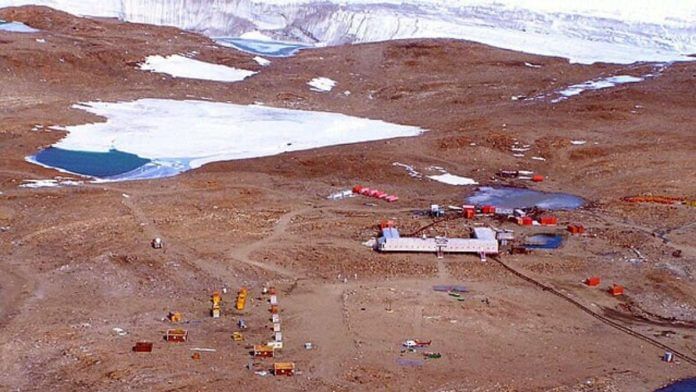New Delhi: The finance ministry has just set the stage for Maitri II, India’s fourth research centre in Antarctica. The facility is due to come up by 2029—marking yet another coming-of-age moment for scientific missions carried out in the region.
Currently, India’s research infrastructure consists of Maitri, which was built in 1989, and Dakshin Gangotri, which was completed in 2012. Back in 2017, Madhavan Nair Rajeevan, who was then the Secretary of the Ministry of Earth Sciences (MoES), announced that Maitri, which had then been around for nearly 30 years, would be “replaced”. Yet, it was only last year that Union minister Kiren Rijiju confirmed the development—a much-needed refurbishment. The new-and-improved Maitri II is said to have better working and living conditions for researchers, who spend much of the year in inhospitable climes.
While the upgrade is crucial, Maitri has also been witness to many milestones. Located along the Schirmacher Oasis, a 20-kilometre expanse of ice-free land in Eastern Antarctica, it is an inland station that can house about 25 people at a time. It consists of a single barebones building. Managed by the National Centre for Polar and Ocean Research (NCPOR), the station also doubles up as a “gateway” to Queen Maud Land, an Antarctic region ‘claimed’ by Norway.
Also read: How did this year’s Chemistry Nobel winners redefine ‘solid matter’? Think ‘Hermione’s handbag’
‘Stood the test of time’
Over the years, Indian scientists have made critical research interventions while housed at Maitri. Answers submitted in the Lok Sabha by the MoES detail some of these achievements. By studying atmospheric ozone concentrations, scientists found that the recovery of ozone depletion takes place at a slower rate in the Antarctic as compared to the Arctic.
In 2003, during the total Solar Eclipse, India was able to observe shadow bands—a rare planetary phenomenon which consists of alternating waves of light. According to an answer in the Lok Sabha, the observations have contributed to the study of shadow bands vis-à-vis various features of “solar activity during the declining phase of the sunspot cycle”.
While research continues to be carried out, the majority of the Antarctic region remains a mystery. With a terrain and biodiversity unlike any other, a chunk of the work performed at Maitri entails studying and unearthing life on the icy desert. Over 240 bacterial species have been discovered in Antarctica, of which 30 have been found by India.
“Biological research by India in Antarctica has been focused primarily towards enumeration of the microbial biodiversity of Antarctica and also to understand the molecular basis of cold adaptation,” reads a Lok Sabha answer from 2015.
Yet, Maitri was originally envisaged as having a shelf life of only 10 years.
“Maitri has become an old facility and there were some flaws that emerged in its waste management. But we plan to retain it as India’s summer camp,” M Ravichandran, Secretary of the MoES, told The Indian Express.
Building any kind of infrastructure in Antarctica—with its harsh weather and tricky terrain—is a herculean challenge. Equipment needs to be transported from the mainland. Material, which is largely prefabricated, also needs to be resilient, capable of withstanding the climate. The current Maitri has been built on steel stilts that have “stood the test of time”, as noted by the NCPRO.
(Edited by Prasanna Bachchhav)






